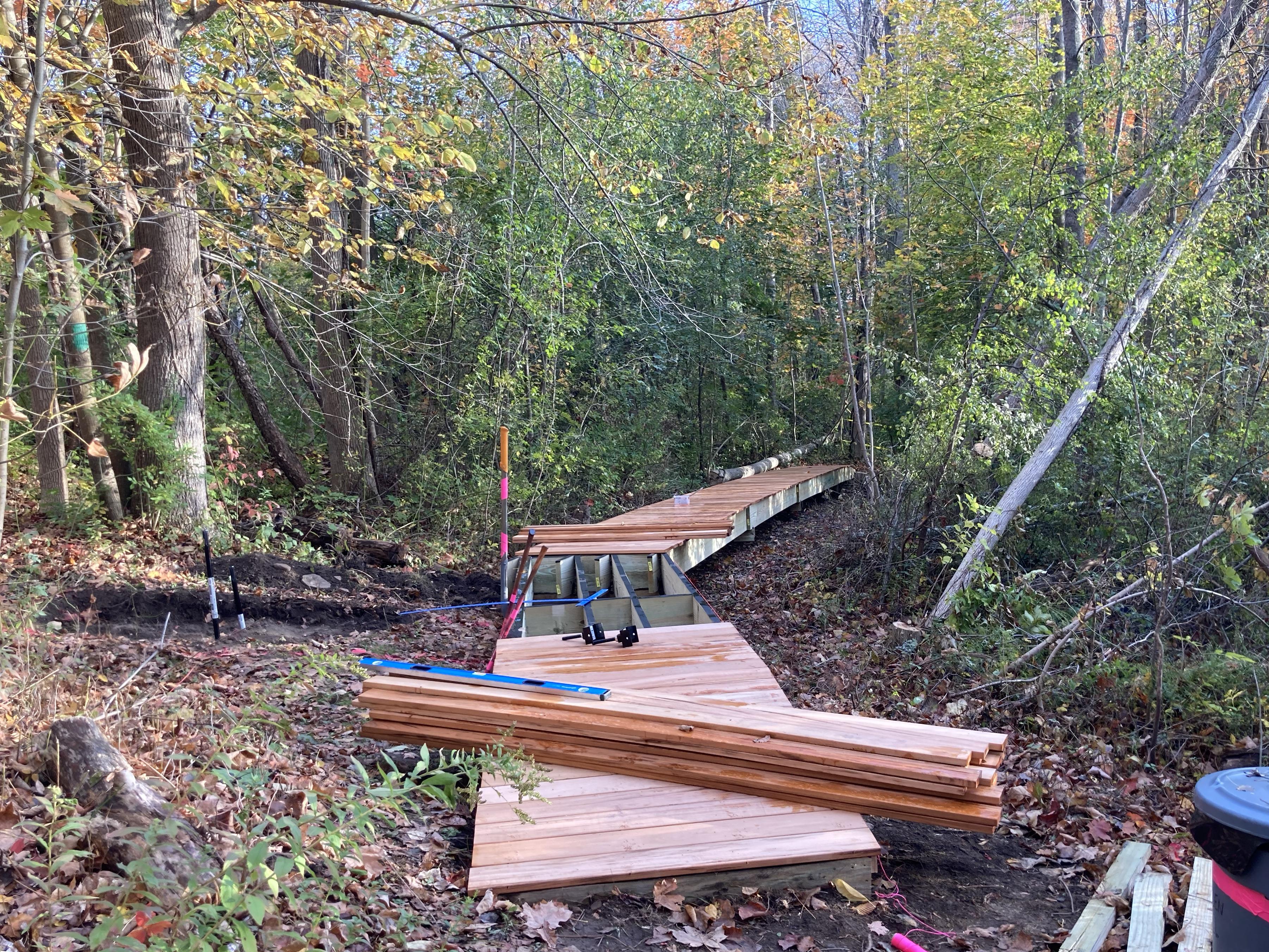Ongoing trail work to make Rice Creek Field Station more accessible to all members of the campus and community recently received a boost thanks to funding from SUNY’s new Outdoors for All program, launched by SUNY Chancellor John B. King Jr. to expand access to nature and outdoor learning opportunities across SUNY campuses statewide.
SUNY Oswego’s Rice Creek Field Station is moving forward on a major trail accessibility improvement project supported in part by SUNY’s new Outdoors for All program, launched by SUNY Chancellor John B. King Jr. to expand access to nature and outdoor learning opportunities across SUNY campuses statewide.
The chancellor’s program, which awarded $8,000 to Rice Creek this fall, is intended to help schools create inclusive outdoor spaces, support student wellness and strengthen community connections through outdoor recreation.
“With the launch of SUNY’s Outdoors for All program, we are working to ensure that our students have access to inclusive, welcoming and accessible outdoor spaces,” Chancellor King said in the announcement. “There is a place at SUNY for every New Yorker — both indoors and outdoors.”
For Rice Creek, the support arrived at just the right moment. The field station had been in the planning stages of an accessibility-focused renovation since 2020 and was close to reaching its fundraising goal when SUNY announced it was opening applications for the program.
“This felt like the perfect opportunity at the perfect time,” said Kristen Haynes, assistant director of Rice Creek. “We were only about $5,000 to $10,000 short of reaching our funding goal. To finally see someone within the SUNY system recognize the value in what we’re doing — that was really exciting.”
Including funding from the “Outdoors for All” program, Rice Creek’s accessibility project has received a total funding amount of around $112,850. Support has come from numerous sources, including Rice Creek Associates, the Shineman Endowed Fund at SUNY Oswego, the Richard S. Shineman Foundation, the Gifford Foundation, Brookfield Renewable and lumber donations from Worden Hill Construction.
Enhanced accessibility
The project’s planned improvements are guided by the U.S. Forest Service accessibility standards to make the trail accessible to all visitors, even those with physical disabilities. These improvements include resurfacing trails with compacted stones, constructing boardwalks through wetland areas, installing Americans with Disabilities Act (ADA) compliant benches at resting intervals and adding trailhead signage with clear navigation and difficulty details.
“When you’re wading through six inches of mud, that’s definitely not ideal in terms of accessibility,” Haynes said.
She noted that the new trail surface would blend seamlessly with the natural landscape as well as add stability for wheelchairs, strollers and mobility aids.
Updated signage is also a priority. Haynes recalled getting lost on her second day at the field station due to unmarked trail splits.
“We want to avoid obstacles and make sure people feel confident before they even start walking,” she said.
While the improvements will benefit all visitors, Haynes emphasized the project’s impact on individuals historically excluded from outdoor spaces and field-based sciences. Oswego County has more than 200 miles of trails, but less than 1 percent are accessible forested trails.
“I’m thinking about students who might not believe fieldwork is accessible to them,” she said. “Maybe this opens the door for someone who previously didn’t think environmental science was an option.”
Construction began in early October. Most structural work is expected to be completed by late November, with final signage possibly extending into early spring.
Time in nature, Haynes said, is something everyone should be able to experience without barriers.
“Nature has this incredible ability to heal, inspire and support personal and professional growth,” she said. “Every person deserves the chance to experience that.”
Located on nearly 400 acres of mixed terrain accessible from Thompson Road, Rice Creek Field Station has served as a living and working laboratory and educational facility for more than five decades. Rice Creek’s five miles of hiking trails are open daily from dawn until dusk. For more information, visit oswego.edu/rice-creek or call 315-312-6677.
–- Written by Emma Kerl of the Class of 2026




